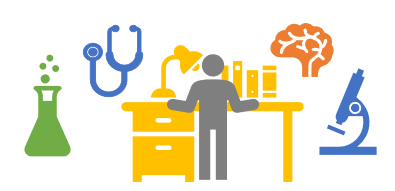Hvorfor:
Interaktive demonstrasjoner kan bli brukt i forelesninger for å demonstrere anvendelsen av et konsept, en ferdighet eller for å spille ut en prosess. Øvelsen bør ikke være passiv; du bør planlegge og strukturere demonstrasjonen så den inkluderer muligheter for studenter til å reflektere og analysere prosessen.

Hvordan:
- Introduser målet og beskrivelse av demonstrasjonen.
- La studentene think-pair-share (se over) for å diskutere hva de tror vil skje eller analysere situasjonen (‘‘pre-demonstrasjon’’ eller situasjon).
- Gjennomfør demonstrasjonen.
- Studentene diskuterer og analyserer resultatet (enten i par/små grupper, eller med hele klassen) basert på deres innledende prediksjoner/tolkninger.
- Fordelene med interaktive demonstrasjoner inkluderer nye visualiseringer av materialet, og lar studentene undersøke sin egen forståelse ved å spørre om de kan forutsi utfallet av demonstrasjonen. De leder også til anvendelser av ideer og konsepter.
Why:
Interactive demonstrations can be used in lectures to demonstrate the application of a concept, a skill, or to act out a process. The exercise should not be passive; you should plan and structure your demonstration to incorporate opportunities for students to reflect and analyse the process.

How:
- Introduce the goal and description of the demonstration.
- Have students think-pair-share (see above) to discuss what they predict may happen, or to analyse the situation at hand (“pre-demonstration” state or situation).
- Conduct the demonstration.
- Students discuss and analyse the outcome (either in pairs/small groups, or as a whole class), based on their initial predictions/interpretations.
- Advantages of interactive demonstrations include novel visualizations of the material and allowing students to probe their own understanding by asking if they can predict the outcome of the demo. They are also a venue for providing applications of ideas or concepts.